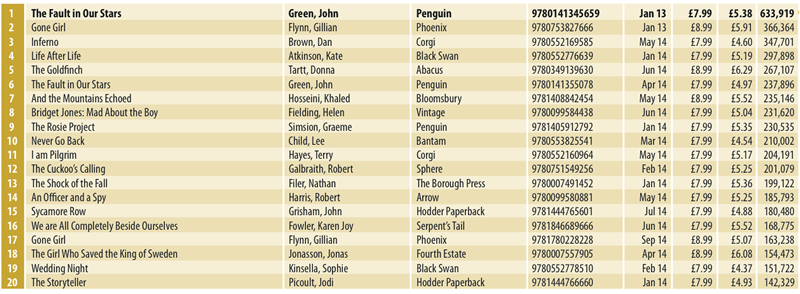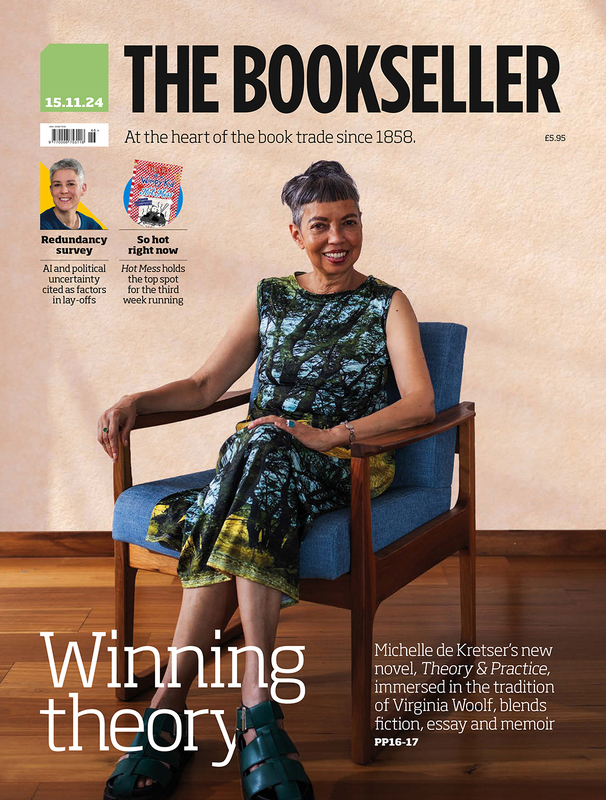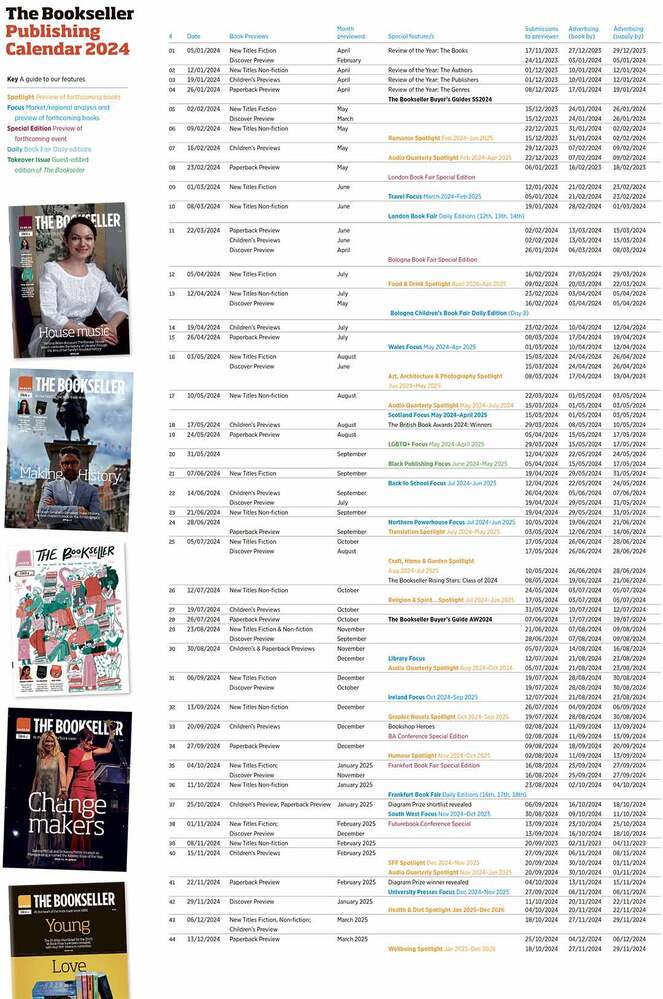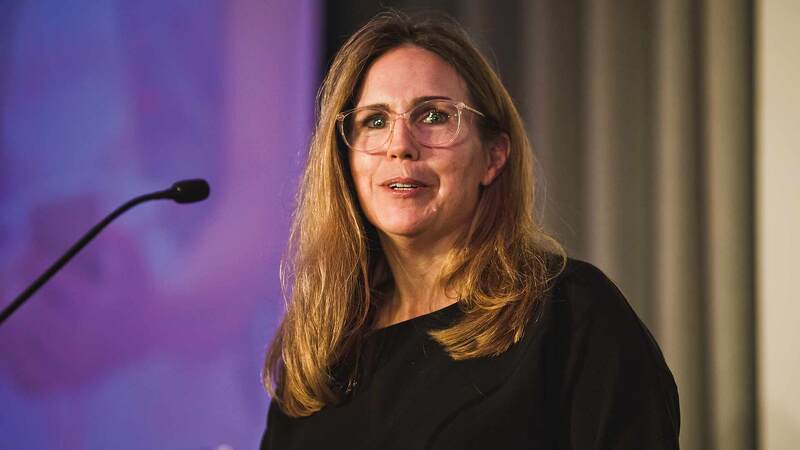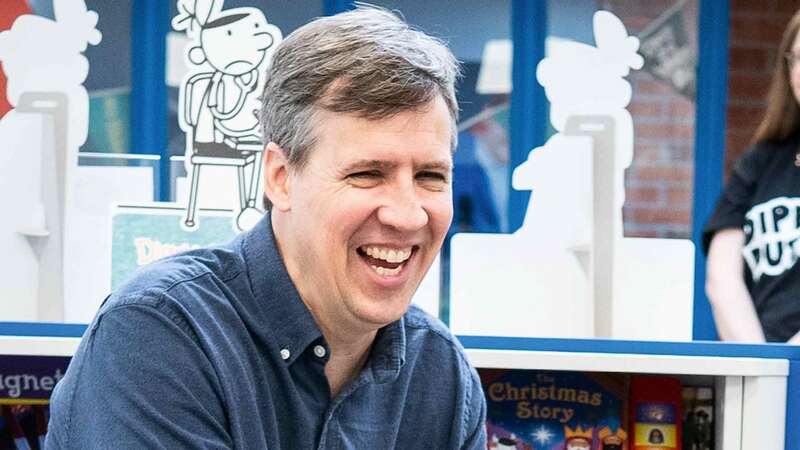You are viewing your 1 free article this month. Login to read more articles.
Review of the Year 2014: Bestsellers
I believe the children are our future / Teach them well and let them lead the way,” the late, great Whitney Houston once sang. It is a sentiment that is undoubtedly being seconded across the land as British booksellers take stock of 2014.
I believe the children are our future / Teach them well and let them lead the way,” the late, great Whitney Houston once sang. It is a sentiment that is undoubtedly being seconded across the land as British booksellers take stock of 2014.
As The Bookseller noted throughout last year, print sales for the Children’s sector have surged, led by a number of hits including Egmont’s Minecraft stable, David Walliams’ Awful Auntie (HarperCollins Children’s Books) and Jeff Kinney’s The Long Haul (Puffin), all of which appear in the top 10 bestsellers of the year.
The Children’s sector finished the year with a robust festive period (£52.9m sold for the month of December through Nielsen BookScan’s Total Consumer Market, up 12% on Christmas 2013), to end the year at £336.5m. That is a whopping 9.1% rise on 2013, and it is the Children’s category’s biggest haul through BookScan since records began (the previous high was £329.7m, in 2009). Children’s represented a record 24% of the print market in 2014, and for the first time the sector’s full-year value sales eclipsed those of BookScan’s Adult Fiction category. This success, it should be underscored, is without 2014’s overall chart-topper, John Green’s Young Adult novel The Fault in Our Stars, which its publisher Penguin classifies as Adult Fiction in the UK.
Top 10 children's books

Kidding around
Buoyed by Children’s success, 2014 was a decent year overall for print. Sales through BookScan did decline on the previous 12 months—and for the seventh consecutive year—but marginally.
Last year, booksellers rung up £1.399bn through the tills on 180.8 million print units in the 52 weeks ending 27th December. That is a 1.3% decline in value, and a 1.9% drop in volume terms. But it puts the brakes on a steep, digital-driven decline from 2011-13, when year-on-year full market value sales collapsed by 7.8%, 4.7% and 6.5%, respectively. It was not necessarily a champagne-corking year, however; £1.399bn is the lowest annual total through the TCM since 2002. And there were declines for all of BookScan’s other major categories: Adult Fiction tumbled 5.3% to £321.3m; Non-Fiction: Trade was down 4% to £585.7m; and Non-Fiction: Specialist declined 3% to £153.6m.
The bestselling books of the year

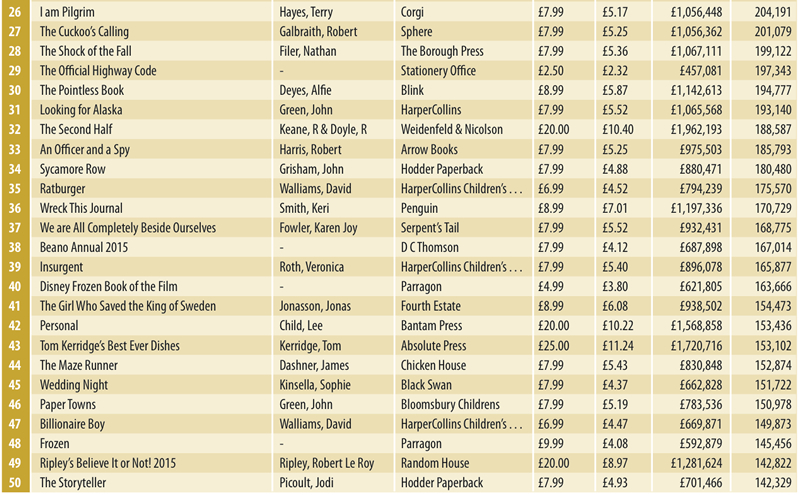
However, there is a sense throughout the industry that as digital disruption appears to have levelled off, the retailers who have survived the downturn are well-equipped to deal with the future. Whatever doesn’t kill you makes you stronger.
A consequence of having a number of children’s titles at the top of the charts is that they generate less cash than adult books. The top 50 for the year (which combines totals for titles in the same format that are priced identically), with its 19 children’s books, generated £77.9m from 12.9 million unit sales, at an average selling price of £6.02. The 2013 top 50, which included 12 children’s books, also shifted almost 12.9 million copies, but those 50 titles earned a far more robust £89.9m, with an a.s.p. of £6.99.
The Fault in Our Stars’ combined (original edition and film tie-in) sales of £4,593,035, meant that, impressively, it shifted almost £1m more through the TCM than its nearest competitor, Guinness World Records 2015 (GWR, £3,609,169). Yet, Fault’s total makes it the second-lowest-selling annual number one in BookScan’s 17 years, beating only Jamie Oliver’s Jamie’s Kitchen (Michael Joseph), which earned £4m in 2002.
Yet, as the old saw goes, revenue is vanity, profit is sanity. And if profitability stems from improved margins, there seems to be some sanity returning to the print side of the industry. The a.s.p. for the market as a whole actually went up year on year, to £7.74 (from £7.69 in 2013), its highest point since 2004. Meanwhile, the average percentage discount off r.r.p. was 25.4%—meaning retailers effectively gave away £476m off the retail price—the lowest since 2003. Contrast that to the Fifty Shades-boosted year of 2012, when the average discount was 29.1% (the highest on record), creating a shortfall of £622.2m.
Top 20 original fiction

There are a number of reasons for 2014’s shrinking discounts—not least a strategic shift from some chains to not compete so aggressively with e-tailers on price. Yet it is also partly owing to a lack of huge Christmas hits.
Oh, books were sold during the festive period, plenty of them: print sales for the last four weeks of 2014 were £233.9m, a 3.7% spike on December 2013. Yet for the most part, the hits were probably not the titles publishers had in mind when dreaming up their 2014 publishing schedules. Of the top 50 titles last year, just 11 were autumn releases. Contrast that with 2013, when 22 titles in the top 50 were published in the run-up to Christmas.
An interesting trend was the Christmas resurgence of titles published earlier in the year. Guy Martin’s My Autobiography (Virgin) topped the Hardback Non-Fiction chart in six of 13 weeks following its publication in May. But the motorcyclist accelerated in the autumn, selling an incredible 113,000 units in the final five weeks of the year, leaving better-known sports memoirists—such as Roy Keane and Kevin Pietersen—in the dust.
Top 20 hardback non-fiction

Jessie Burton’s The Miniaturist (Picador) had a similar second wind, boosted by social media word-of-mouth and its inclusion in many publications’ “books of the year” lists. The Miniaturist hit number one in Original Fiction in the last two weeks of 2014, 23 weeks after first being published.
Top 10 heatseekers fiction

Gruff and puff
As noted in a lead story in The Bookseller back in November, 2014 was a year which saw a rise in backlist. This was true even at the top: 41.8% (£239.9m) of revenue in the 2014 TCM Top 5,000 was generated by backlist; in 2013 it was 38.9%.
Is there any better embodiment for the year of the backlist than 2014’s top-selling author, Julia Donaldson? The Gruffalo creator shifted £12.6m through the TCM last year, beating her nearest competitor (Walliams, at £9.2m) by some distance. But Donaldson did not trouble the top 50—her bestselling title, Superworm (Alison Green, 115,996 units), is down in 73rd place. However, Donaldson had a stunning 69 different ISBNs in the Top 5,000 (at 71, only Roger “Mr Men” Hargreaves had more), and 85% of the £12.6m she earned was from backlist titles.
Of course, there were breakout frontlist hits this year. Egmont’s official Minecraft series was, after Donaldson, the biggest children’s property of the year, selling £10.3m through the tills. Like her fellow YA author Green, Veronica Roth benefited from a film tie-in, with the three books in her Divergent series combining to generate just under £4m.
Lastly, breakouts in 2014 would not be complete without mentioning those star-cross’d lovers/YouTube celebs Alfie Deyes and Zoe “Zoella” Sugg. Deyes’ The Pointless Book (Blink) was Paperback Non-Fiction number one for 15 of the last 17 weeks of 2014, while Sugg’s Girl Online (Penguin) became the fastest-selling début novel of all time.
Top 20 paperback non-fiction
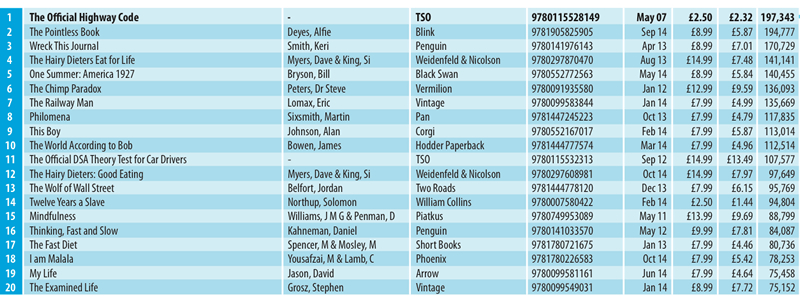
Deyes’ and particularly Sugg’s manufactured titles generated much hand-wringing from the pale, male and stale commentators in the mainstream media. But the kids who rushed to the shops did not seem to mind how the books were produced. But that was last year. An interesting question for this year will be whether Sugg and Deyes—and the raft of YouTubers publishers have signed in their wake—can be built into viable book brands, or are internet flashes in the pan.
Top 20 paperback fiction
